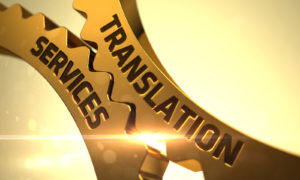19 Aug Is There Such a Thing as a “Best Rate” in the Translation Industry?

By Rafa Lombardino
Have you ever received an email from a client asking for your resume and your “best rate”? Do you have a number you would consider a “best rate”? Is there, in fact, such a thing?
Most requests I receive from potential clients, as well as the job posts I see online, mention this mysterious unit of measure. I usually reply with my standard rate, but whenever the client’s Project Manager emphasizes “best,” I tell them that it’s $1 per word. Wouldn’t it be wonderful if all of us could make a whole dollar per word? That would literally be the best!
Jokes aside, we all know that’s not what these clients are asking for, is it? They want to know our lowest price, that is, what’s best for them.
We cannot fall into such a trap! If we all start to lower our prices just to secure a project, in some sort of upside-down auction, it may be harder to bring our prices back the standard rate once a business relationship is established. It’s not a matter of “how low can you go”―it’s a matter of how competent you are in providing the services a client needs.
If we all start to lower our prices just to secure a project, in some sort of upside-down auction, it may be harder to bring our prices back the standard rate once a business relationship is established.
In order to thwart this strategy by translation agencies, keep an eye on your average output, calculate the income that you can expect based on your working hours per week or month, and try to find the range of rates that work.
It’s okay to have a range, to charge more or less depending on the nature of the project, since some subjects may come easier to you than others. And it’s okay to be sensitive to a client’s geographic location, currency, payment method, and other particular details, as there are several factors that need to be taken into account when working with international clients. What payment methods are available to clients located in another country? What’s the currency conversion rate, and how does that affect the final amount you’ll receive after transfer and bank fees are deducted? Does the client need more time to make payment than you’re used to wait in order to be paid for your work?

It’s also okay to offer a range of prices: one that is higher for more urgent documents, which would keep you booked and fully dedicated to that client until the delivery date, and another one that is lower, thus more beneficial to the client, but which would give you more time to complete the project and, consequently, give you the ability to add other projects to the schedule, thus removing the idea of exclusive dedication. Odds are, clients will potentially choose the latter and you’ll be able to organize yourself better.
Deep down, it’s all about client education. Translators should make their best efforts to try to get the client to understand that going for the cheaper alternative may not be the smartest decision they’ll be making for the sake of their business. All in all, they may end up paying twice as much for a not-so-good translation AND a separate copy editor to fix everything, compared to what they would be paying for a qualified translator who charges a fair price for the quality and turnaround being offered.
Notwithstanding your negotiation strategy, you must always keep one thing in mind: In the end, you have bills to pay and must make a living, just like everybody else. Your knowledge, your skills, and your time go into your price.
So, what’s the “best rate” for you?
[Rafa Lombardino is a translator and journalist from Brazil who lives in California. She is the author of “Tools and Technology in Translation ― The Profile of Beginning Language Professionals in the Digital Age,” which is based on her UCSD Extension class. Rafa has been working as a translator since 1997 and, in 2011, started to join forces with self-published authors to translate their work into Portuguese and English. In addition to acting as content curator at eWordNews, a collective blog about translation and literature, she also runs Word Awareness, a small network of professional translators, coordinates Contemporary Brazilian Short Stories (CBSS), a project to promote Brazilian literature worldwide, and is the current American Translators Association – Portuguese Language Division (ATA-PLD) Administrator for the 2017-2019 term.]
The views and opinions expressed are those of the author and do not necessarily reflect the official position of NAJIT.
